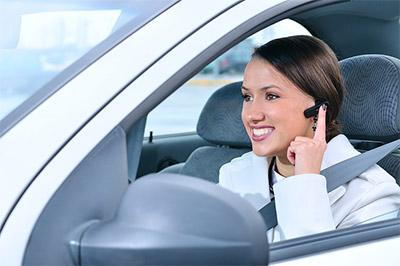Picking the safest car to protect your body

Picking the safest car to protect your body
Next to buying a home, buying a car may be the most significant purchase you may make. For the past 20 years as a practicing chiropractor I have seen the effects that poorly designed cars have on bodies. According to David Zuby, senior vice president of vehicle research for The Insurance Institute for Highway Safety (IIHS). “a really, really poorly designed or insufficiently designed large- or medium sized car may be more or less protective then the best-designed small car, but that’s something that you’re not going to be able to tell just by looking a crash-test ratings. So all things being equal, if you’re concerned about safety, you want a bigger, heavier car.” IIHS statistics support Mr. Zuby. Death rates in minicars involved in multi-car crashes are nearly twice as high as those in large sedans. In single –car crashes 11 million people were killed in large sedans in 2007, compared with 35 million killed in small cars. In mid-size cars, the death rate for single-vehicle crashes is 17% less than for minicars. Newton’s Laws Three laws of motion Out of control vehicles in motion continue moving until they hit something. In any collision, the rate of deceleration is directly proportional to the impacting force and inversely proportional to the weight of the vehicle and its contents. It is the deceleration at impact that kills. Cars with longer hoods and more crumple zones with heavier weight slow down the impact. It only takes 40 g of deceleration to kill. Only supremely lucky and fit individuals can survive 40 times gravitational force for more than a few milliseconds. Newton’s law explains the heavier the object the slower the deceleration. Crumple zones will absorb impact and slow the deceleration of the impact reducing forces to the occupant. The force of the crash is determined by the weight and size of the crashing vehicle. Larger cars have more hood distance between the driver and the crashing vehicle than small cars. Picking a larger safer car may make the difference in being disabled or suffering a more severe injury. Each year the IIHS tests evaluate crashworthiness and crash avoidance. To qualify for 2014 TOP SAFETY PICK +, a vehicle must earn good ratings in the moderate overlap front, side, roof strength and head restrain tests; a good or acceptable rating in the small overlap front test; and a basic, advanced or superior rating for front crash prevention:Small cars
- Honda Civic 4-door
- Mazda 3
- built after October 201
- Toyota Prius
- built after November 2013
Midsize moderately priced cars
- Ford Fusion
- Honda Accord 2-door
- Honda Accord 4-door
- Mazda 6
- Subaru Legacy
- Subaru Outback
- Midsize luxury/near-luxury cars
- Infiniti Q50
- Lincoln MKZ
- Volvo S60
Large luxury cars
- Acura RLX
- Volvo S80
- Small SUVs
- Mazda CX-5
- built after October 2013
- Mitsubishi Outlander
- Subaru Forester
- Midsize SUV
- Toyota Highlander
- Midsize luxury SUVs
- Acura MDX
- Mercedes-Benz M-Class
- built after August 2013
- Volvo XC60
- Minivan
- Honda Odyssey
Except for the Volvo S60, S80 and XC60 and the hybrid version of the Honda Civic 4-door, vehicles listed under Top Safety Pick+ qualify for that award only when equipped with optional front crash prevention. Front crash prevention isn't available on nonhybrid versions of the Civic. To qualify for 2014 TOP SAFETY PICK, a vehicle must earn good ratings in the moderate overlap front, side, roof strength and head restrain tests, plus a good or acceptable rating in the small overlap front test.
- Minicar
- Chevrolet Spark
- Small cars
- Dodge Dart
- Ford Focus
- Honda Civic 2-door
- Hyundai Elantra
- Scion C
- Subaru Impreza
- Subaru XV Crosstrek
- Midsize
- moderately priced cars
- Chrysler 200 4-door
- Dodge Avenger
- Kia Optima
- Nissan Altima
- Toyota Camry
- built after December 2013
- Volkswagen Passat
- Midsize
- luxury/near-luxury car
- Acura TL
- Small SUV
- Mitsubushi Outlander Sport
- Midsize luxury SUV
- Volvo XC90
My dream car is the Volvo S60. In my opinion it scored the best on what matters most; avoiding an accident and surviving an accident. Volvo for many years has met standards that are now being required to be on the Safety Pick Plus list. I have also noticed that patients in Volvo’s seem to be less injured than patients in smart cars or small cars. In addition to picking a car that is crashworthy, remember you can still do things to reduce your risk of injury. Keep your head rest raised above your ears. If your headrest is too low your head ramps over the head rest and further into extension resulting in a more significant injury. Keep your seatback upright or at 10 degrees reclined. This again, reduces the forces on your neck at impact. If you know you are going to be hit, put your foot on the brake and look forward, avoid head rotation at the time of impact. Avoid texting or talking on the phone. In 2010 driver distraction was the cause of 18 percent of all fatal crashes- with 3,082 people killed- and 416,000 people wounded. The Virginia Tech Transportation Institute found that text messaging increases a crash risk 23 times. Sending or receiving a text takes a driver’s eyes from the road for an average of 4.6 seconds, the equivalent-at 55 mph of driving the length of an entire football field, blind. Auto accidents are traumatic to all aspects of your life. Frequently, accidents create misalignments of the spine putting pressure on delicate nerve tissue resulting in severe pain.Gentle re-alignment of your spine removes nerve pinching. Studies show whiplash injuries left uncorrected can result in early spinal degeneration. In fact, studies show as many as 40 percent of people involved in auto accidents still have pain up to five years later. Simply taking drugs and anti-infammatories such as aspirin or ibuprofen fails to correct the underlying cause of your pain. An article in the Lancet suggests that non-steroidal anti-inflammatories can accelerate osteoarthritis. Correcting the underlying cause of your pain following your accident can prevent you from suffering from headaches, and neck and low back pain for years to come. Dr. Whitehead DC uses her extensive biomedical knowledge to locate and treat the cause of your pain gently and without medication, leaving you pain-free quickly and effectively. If you are injured remember to call our office. If treated within the first “golden hour” pain and swelling can be significantly reduced and healing accelerated.
Reference Forbes 4/14/18 Why small cars won't keep you safe Forbes.comOur Location
Austin Chiropractic & Rehab
5775 Airport Blvd #300
Austin, TX
8:00 am - 12:30 pm
2:00 pm - 6:00 pm
8:00 am - 12:30 pm
2:00 pm - 6:00 pm
8:00 am - 12:30 pm
2:00 pm - 6:00 pm
8:00 am - 12:30 pm
2:00 pm - 6:00 pm
8:00 am - 12:30 pm
Closed
Closed
